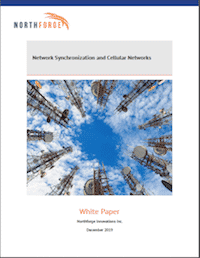
All computers run NTP (Network Time Protocol) to synchronize their system clocks to a reference clock, i.e., an NTP server. A “good” NTP server is synchronized to a very high-quality reference clock like GPS or an atomic clock, which we refer to as a Primary Reference Clock (PRC). There are so many everyday applications that depend on having the “correct” time: sending and receiving email; synchronizing shared files and databases; time stamping transactions, etc. If the computers didn’t have the same time many of these activities wouldn’t work correctly (e.g., a newer file might be overwritten by an older file).
Synchronizing our computers within a half second or so is sufficient for many of these activities (as opposed to a minute or two for our everyday lives). The accuracy of NTP depends on the quality of the network. Long delays and high variation in the amount of delay make synchronization difficult. NTP across a LAN can provide very tight synchronization (on the order of 1–5 ms), but across the Internet it can be anywhere from about 10ms to a second. NTP allows us to synchronize time but not frequency. Applications that require very tight synchronization (milliseconds or microseconds) need a better solution.
We implement time synchronization on our computers, but we don’t worry about frequency synchronization; we just resynchronize the time on a regular basis—our computers aren’t frequency synchronized to the NTP server. But that’s ok, it just means that we will drift away and get pulled back the next time we synchronize. But our computers are not the only application out there.
This white paper covers:
- Synchronization Requirements for Cellular Technologies
- Components of the Radio Access Network (RAN) and Backhaul
- How these issues have been addressed
- Changes in Cellular Networks

